
Enchanting Mostar Surroundings: A Journey Through Nature and History
Discover the enchanting surroundings of Mostar in Bosnia and Herzegovina, where natural beauty meets historical charm in a perfect blend of serenity and adventure.
The surroundings of Mostar in Bosnia and Herzegovina offer a blend of natural beauty and historical intrigue. Just a short drive from the city, you can explore a variety of landscapes, from lush forests to serene rivers, and charming villages that seem frozen in time. One of the must-visit locations is the Kravice Waterfalls, a stunning natural wonder where you can swim in clear turquoise waters or simply relax and enjoy the view. The nearby town of Blagaj is home to the famous Blagaj Tekke, a picturesque Dervish monastery perched at the source of the Buna River. Its tranquil atmosphere and scenic beauty make it a perfect spot for a peaceful retreat. For history enthusiasts, the medieval village of Pocitelj offers a step back in time. Wander through its cobbled streets, visit the historic fortress, and enjoy panoramic views of the Neretva River. Each of these destinations provides a unique glimpse into the rich culture and history of Bosnia and Herzegovina, making the surroundings of Mostar a must-see for any traveler.
Local tips in Mostar Surroundings
- Visit Kravice Waterfalls early in the morning to avoid crowds and enjoy the tranquility.
- Wear comfortable walking shoes when exploring Pocitelj, as the cobbled streets can be uneven.
- Bring a picnic to Blagaj Tekke and enjoy a meal by the river for a truly relaxing experience.
- Consider renting a car to easily explore the various attractions around Mostar.
- Check the local weather forecast before heading out, as some activities are best enjoyed in good weather.
Enchanting Mostar Surroundings: A Journey Through Nature and History
The surroundings of Mostar in Bosnia and Herzegovina offer a blend of natural beauty and historical intrigue. Just a short drive from the city, you can explore a variety of landscapes, from lush forests to serene rivers, and charming villages that seem frozen in time. One of the must-visit locations is the Kravice Waterfalls, a stunning natural wonder where you can swim in clear turquoise waters or simply relax and enjoy the view. The nearby town of Blagaj is home to the famous Blagaj Tekke, a picturesque Dervish monastery perched at the source of the Buna River. Its tranquil atmosphere and scenic beauty make it a perfect spot for a peaceful retreat. For history enthusiasts, the medieval village of Pocitelj offers a step back in time. Wander through its cobbled streets, visit the historic fortress, and enjoy panoramic views of the Neretva River. Each of these destinations provides a unique glimpse into the rich culture and history of Bosnia and Herzegovina, making the surroundings of Mostar a must-see for any traveler.
When is the best time to go to Mostar Surroundings?
Iconic landmarks you can’t miss
Old Bridge Mostar
Explore the Old Bridge of Mostar, a stunning Ottoman masterpiece and a UNESCO World Heritage site, rich in history and breathtaking views.

Fortica
Discover Fortica in Mostar, where adventure meets breathtaking views, featuring a thrilling zipline and scenic hiking trails for all outdoor enthusiasts.

Karađoz Beg Mosque
Explore the Karađoz Beg Mosque, a masterpiece of Ottoman architecture and a serene haven in the heart of Mostar, Bosnia and Herzegovina.

Mostar Peace Bell Tower
Discover the Mostar Peace Bell Tower: a beacon of hope and stunning views in the heart of Bosnia and Herzegovina's historic city.

Koski Mehmed Pasha Mosque
Discover the enchanting Koski Mehmed Pasha Mosque in Mostar, an architectural marvel and cultural landmark reflecting Bosnia's rich heritage.

Millennium Cross
Explore the Millennium Cross in Mostar, a majestic landmark offering breathtaking views and a rich cultural experience in the heart of Bosnia and Herzegovina.

Titov Most
Discover the breathtaking Titov Most in Mostar, an iconic bridge rich in history and stunning views, a must-visit for every traveler.

Mostar Old Town
Experience the timeless beauty and cultural richness of Mostar Old Town, where history meets breathtaking natural landscapes in Bosnia.

Lučki most
Explore Stari Most, Mostar's iconic bridge, a marvel of Ottoman architecture and a symbol of cultural harmony in Bosnia and Herzegovina.

Kriva ćuprija
Discover the beauty and history of Kriva Ćuprija, Mostar's iconic bridge, a must-see landmark that defines the city's picturesque skyline.

Muslibegovic House
Discover the charm of Muslibegovic House, a stunning blend of history and hospitality in the heart of Mostar, Bosnia.

Biscevic House
Experience the charm of Mostar at the Bišćević House, a cultural landmark that showcases traditional Turkish architecture and rich historical heritage.

Café de Alma
Experience the rich flavors of Bosnian coffee at Café de Alma, Mostar's charming café that combines local tradition with a cozy ambiance.

FREE WALKING TOUR MOSTAR / SHEVA WALKING TOURS
Discover Mostar's rich history and vibrant culture with FREE WALKING TOUR MOSTAR - an engaging exploration of iconic landmarks and local stories.

Mostar Free Walking Tour
Discover Mostar's rich history and stunning architecture on the Mostar Free Walking Tour, guided by passionate locals sharing their city's stories.
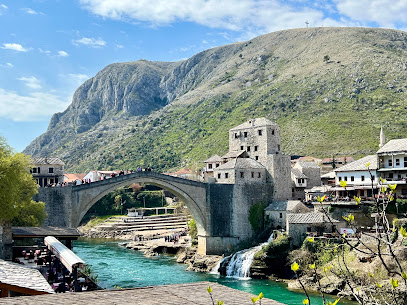
Unmissable attractions to see
Apparition Hill
Explore the spiritual haven of Apparition Hill in Bijakovići, a pilgrimage site offering breathtaking views and profound moments of reflection.

Fortica
Experience the thrill of zip-lining and breathtaking views at Fortica, Mostar's premier adventure sports destination in Bosnia and Herzegovina.

Počitelj Fortress
Explore the historic Počitelj Fortress, a stunning UNESCO World Heritage Site with breathtaking views and rich cultural heritage in Bosnia and Herzegovina.

Millennium Cross
Explore the iconic Millennium Cross in Mostar, a symbol of hope and unity, offering stunning views and a glimpse into the region's rich cultural history.

Titov Most
Discover the beauty and history of Titov Most in Mostar, a stunning bridge that connects cultures and offers breathtaking views of the Neretva River.
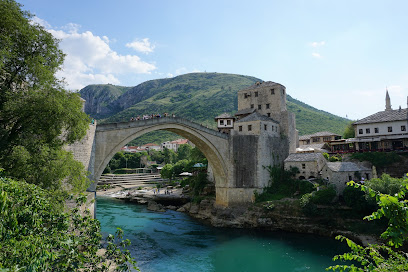
Lučki most
Explore the majestic Lučki Most, an architectural gem and historical symbol of Mostar, where breathtaking views and rich culture await.

Lukomir viewpoint
Discover the breathtaking vistas at Lukomir Viewpoint, a must-visit natural attraction in Bosnia's stunning landscapes.
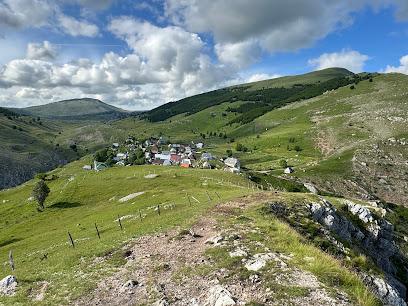
Nekropole sa stećcima
Discover the fascinating history of Bosnia and Herzegovina at Nekropole sa stećcima, home to unique medieval tombstones that tell tales of a bygone era.

Beach below Stari Most
Experience the tranquil beauty of the beach below Stari Most, where stunning views and serene waters create the perfect getaway in Mostar.

Bosnaseum
Discover Bosnia's rich heritage at Bosnaseum in Mostar, where history and culture intertwine to tell the story of a resilient nation.

Kula Tara
Explore Kula Tara, a historical landmark in Mostar, rich in culture and breathtaking scenery, a must-see for all travelers.

Crooked Bridge
Explore the Crooked Bridge in Mostar, a stunning historical landmark that showcases the beauty and resilience of Bosnia and Herzegovina's rich cultural heritage.

Sahat Kula
Discover the historical essence of Sahat Kula, Mostar's iconic Clock Tower, a symbol of cultural heritage and panoramic views.
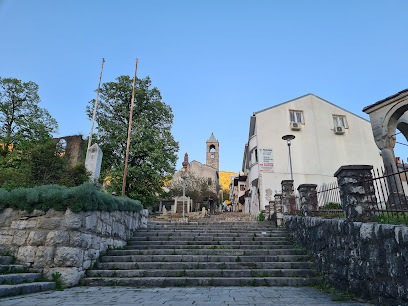
Halebija Tower
Explore Halebija Tower, a historical landmark in Mostar, offering breathtaking views and rich insights into the city's Ottoman heritage.

Mostar City viewpoint for sunset
Experience breathtaking sunsets at Mostar’s iconic viewpoint, where stunning views meet rich cultural heritage in a picturesque setting.

Essential places to dine
Restaurant Šadrvan
Experience authentic Bosnian flavors at Restaurant Šadrvan in Mostar – where culinary tradition meets modern hospitality.

Tima - Irma
Experience authentic Bosnian barbecue at Tima - Irma in Mostar; where tradition meets flavor in every bite.

Niđe veze
Experience delicious grilled specialties and fresh pizza at Niđe veze in Mostar - where local flavors meet warm hospitality.

Hindin Han
Experience authentic Bosnian cuisine at Hindin Han – a delightful restaurant in Mostar renowned for its traditional dishes and welcoming atmosphere.

URBAN taste of orient
Experience the best of Bosnian cuisine at URBAN taste of orient in Mostar – where tradition meets modern elegance.
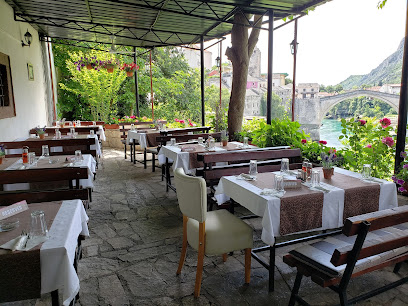
Restaurant Goranci
Discover authentic Bosnian cuisine amidst breathtaking views at Restaurant Goranci – a perfect retreat for food lovers in Goranci.

Del Rio
Discover authentic Bosnian flavors at Del Rio in Mostar – where every meal tells a story.

Food House Mostar
Discover authentic Mediterranean cuisine at Food House Mostar – where tradition meets modern dining in the heart of Bosnia.

Restoran Radobolja
Experience the best of Bosnian cuisine at Restoran Radobolja - where nature meets flavor in Mostar's stunning garden setting.

EDEN Hotel & Spa
Experience luxury and tranquility at EDEN Hotel & Spa in Mostar - where exquisite dining meets unparalleled wellness.

Pablo's Restaurant & Club
Experience the essence of Bosnian cuisine at Pablo's Restaurant & Club in Mostar—where fine dining meets vibrant nightlife.

Restaurant Vrelo
Experience authentic Bosnian cuisine at Restaurant Vrelo in Blagaj, featuring delicious grilled meats and fresh fish amidst stunning natural beauty.

Terrace Lagero
Discover the flavors of Herzegovina at Terrace Lagero – where breathtaking views meet exquisite local cuisine in Mostar.

Blok bar & restaurant
Experience exquisite dining at Blok Bar & Restaurant in Mostar—where local flavors meet vibrant nightlife.

Restaurant Bella Vista
Experience authentic Bosnian cuisine with stunning views at Restaurant Bella Vista in Mostar.

Markets, malls and hidden boutiques
Old Bridge Mostar
Discover the breathtaking Old Bridge of Mostar, a UNESCO World Heritage Site showcasing stunning Ottoman architecture and rich cultural history.

Mepas Mall
Explore Mepas Mall, Mostar's premier shopping destination, offering a blend of local culture, diverse shopping options, and delicious dining experiences.

Piramida shopping centar
Explore the Piramida Shopping Centar in Mostar, a dynamic shopping mall offering boutiques, cafes, and wellness experiences in a vibrant setting.

Megamarket
Discover Megamarket in Mostar, a vibrant shopping mall blending local charm with global brands for an unforgettable retail experience.

Prodajni centar Mostar
Discover shopping, dining, and entertainment at Prodajni Centar Mostar, the ultimate destination for tourists seeking local culture in a modern setting.
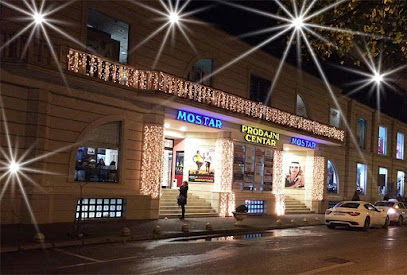
Španski trg
Explore Španski trg, a historical square in Mostar, where stunning architecture meets vibrant culture and local traditions.

Mostar Old Town
Explore Mostar Old Town: A mesmerizing blend of history, culture, and stunning architecture in the heart of Bosnia and Herzegovina.

Café de Alma
Discover the heart of Mostar at Café de Alma, where every cup of coffee tells a story and every visit feels like home.

Trendy American Outlet
Shop stylish and affordable plus-size clothing at Trendy American Outlet in Mostar for a unique shopping experience.

Caffe slasticarna Amir
Discover the sweet flavors of Mostar at Caffe slasticarna Amir, where every cake tells a story and every bite is a delight.

Hostel Miran Mostar
Discover the heart of Mostar at Hostel Miran - your cozy retreat for culture, comfort, and camaraderie in Bosnia and Herzegovina.

Brothers Music Store
Explore the vibrant sounds of Mostar at Brothers Music Store, the ultimate destination for music lovers and aspiring musicians.
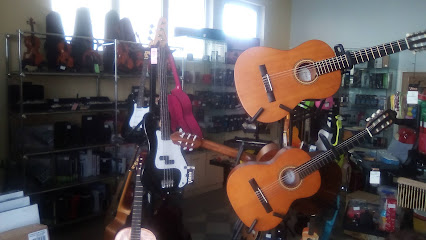
Hostel Mirror
Experience comfort and community at Hostel Mirror in Mostar, your gateway to exploring the stunning beauty and rich culture of Bosnia.

Hostel Nina
Discover the heart of Mostar at Hostel Nina, where comfort meets cultural exploration in a vibrant atmosphere.

Hostel Musala
Discover the charm of Mostar while enjoying a comfortable stay at Hostel Musala, where hospitality meets affordability.

Essential bars & hidden hideouts
Shankly's Pub
Discover the vibrant atmosphere of Shankly's Pub in Mostar, where local brews and delicious food come together for an unforgettable experience.

TABOO Bar Restaurant
Experience the unique blend of traditional and modern cuisine at TABOO Bar Restaurant in the heart of Mostar, a must-visit culinary destination.

Bazza
Discover Bazza: Mostar's premier bar and jazz club offering exquisite cocktails, live music, and an unforgettable atmosphere.
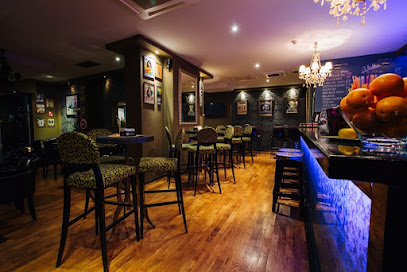
Ice Bar
Discover the unique charm of the Ice Bar in Mostar, a cafe where refreshing drinks and a vibrant atmosphere come together for an unforgettable experience.

Hemingway Bar
Discover the cozy charm of Hemingway Bar in Mostar, where exquisite cocktails meet a welcoming café atmosphere.

Mazel Tov Concept Bar
Experience the vibrant atmosphere and delightful beverages at Mazel Tov Concept Bar in Mostar, a favorite among locals and tourists alike.
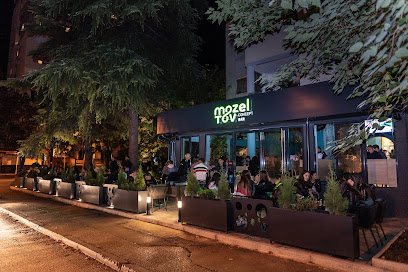
Craft Beer Garden imaimoze
Discover the best craft beers and a vibrant atmosphere at Craft Beer Garden imaimoze in Mostar, where tradition meets modern brewing excellence.

Von Herzog
Discover the lively Von Herzog pub in Mostar, where locals and tourists unite over delicious drinks and a vibrant atmosphere.

Garden pub
Discover the serene atmosphere of Mostar's Garden Pub, where lush greenery meets an inviting selection of drinks, perfect for relaxation after a day of exploration.

Charlie - bar & snack
Discover Mostar's hidden gem at Charlie - Bar & Snack, where local flavors and a vibrant atmosphere come together for an unforgettable experience.

Caffe Cocktail bar Polaris Mostar
Discover the vibrant atmosphere and creative cocktails at Caffe Cocktail Bar Polaris in Mostar, a perfect spot for relaxation and socializing.

Caffe Bar Fratello
Experience the charm of Caffe Bar Fratello in Mostar - a cozy retreat offering delightful drinks and a warm atmosphere for travelers.

The Rebels pub
Discover the lively atmosphere of The Rebels Pub in Mostar, where local culture meets great drinks and unforgettable memories.

Night Bar Duradzik
Discover the lively spirit of Mostar at Night Bar Duradzik, where delicious drinks and a vibrant atmosphere await you.

Terasa
Discover Terasa, Mostar's lively cocktail bar offering a unique blend of local flavors and classic drinks in a charming setting.
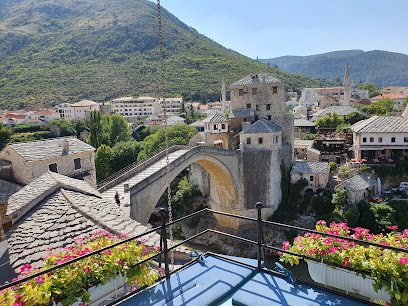
Local Phrases about Mostar Surroundings
-
- HelloZdravo
[Zdra-vo] - GoodbyeDoviđenja
[Do-vi-djen-ja] - YesDa
[Da] - NoNe
[Ne] - Please/You're welcomeMolim
[Mo-lim] - Thank youHvala
[Hva-la] - Excuse me/SorryIzvinite
[Iz-vi-ni-te] - How are you?Kako si?
[Ka-ko si] - Fine. And you?Dobro. A ti?
[Do-bro. A ti] - Do you speak English?Govorite li engleski?
[Go-vo-ri-te li eng-les-ki] - I don't understandNe razumijem
[Ne ra-zu-mi-jem]
- HelloZdravo
-
- I'd like to see the menu, pleaseMogu li vidjeti meni, molim
[Mo-gu li vid-je-ti me-ni, mo-lim] - I don't eat meatNe jedem meso
[Ne je-dem me-so] - Cheers!Živjeli!
[Ziv-je-li] - I would like to pay, pleaseŽelio bih platiti, molim
[Ze-li-o bih pla-ti-ti, mo-lim]
- I'd like to see the menu, pleaseMogu li vidjeti meni, molim
-
- Help!Pomoć!
[Po-moc] - Go away!Idi odavde!
[I-di o-da-vde] - Call the Police!Pozovite policiju!
[Po-zo-vi-te po-li-ci-ju] - Call a doctor!Pozovite doktora!
[Po-zo-vi-te dok-to-ra] - I'm lostIzgubio/la sam se
[Iz-gu-bio/la sam se] - I'm illBolestan/sam/na sam
[Bo-le-stan/sam/na sam]
- Help!Pomoć!
-
- I'd like to buy...Želio bih kupiti...
[Ze-li-o bih ku-pi-ti] - I'm just lookingSamo gledam
[Sa-mo gle-dam] - How much is it?Koliko košta?
[Ko-li-ko kos-ta] - That's too expensiveTo je previše skupo
[To je pre-vi-she sku-po] - Can you lower the price?Možete li spustiti cijenu?
[Mo-ze-te li spu-sti-ti ci-ju-nu]
- I'd like to buy...Želio bih kupiti...
-
- What time is it?Koliko je sati?
[Ko-li-ko je sa-ti] - It's one o'clockJedan sat je
[Je-dan sat je] - Half past (10)Pola (deset)
[Po-la (de-set)] - MorningJutro
[Ju-tro] - AfternoonPopodne
[Po-po-dne] - EveningVeče
[Ve-che] - YesterdayJučer
[Ju-cher] - TodayDanas
[Da-nas] - TomorrowSutra
[Su-tra] - 1Jedan
[Je-dan] - 2Dva
[Dva] - 3Tri
[Tri] - 4Četiri
[Che-ti-ri] - 5Pet
[Pet] - 6Šest
[Shest] - 7Sedam
[Se-dam] - 8Osam
[O-sam] - 9Devet
[De-vet] - 10Deset
[De-set]
- What time is it?Koliko je sati?
-
- Where's a/the...?Gdje je...
[Gdje je] - What's the address?Koja je adresa?
[Ko-ja je a-dre-sa] - Can you show me (on the map)?Možete li mi pokazati (na karti)?
[Mo-ze-te li mi po-ka-za-ti (na kar-ti)] - When's the next (bus)?Kada je sljedeći (autobus)?
[Ka-da je slje-de-ci (au-to-bus)] - A ticket (to ....)Jednu kartu (do ...)
[Je-dnu kar-tu (do)]
- Where's a/the...?Gdje je...
History of Mostar Surroundings
-
Mostar and its surroundings were significantly influenced by the Ottoman Empire starting from 1463. The construction of the iconic Stari Most (Old Bridge) in 1566 by Mimar Hayruddin, a student of the famous architect Mimar Sinan, marked a pivotal moment in Mostar's history. The bridge not only symbolized the connection between the East and West but also facilitated trade and cultural exchange in the region. The Ottoman period introduced Islamic architecture, including numerous mosques, baths, and madrasas, which became integral parts of the local culture and urban landscape.
-
The Congress of Berlin in 1878 saw the Austro-Hungarian Empire take control of Bosnia and Herzegovina, including Mostar. This period brought about significant modernization and industrialization. The Austro-Hungarians introduced Western architectural styles, new infrastructure, and urban planning. Prominent buildings such as the Franciscan Monastery and the Gymnasium Mostar reflect the architectural blend of Ottoman and Austro-Hungarian influences. Railways and roads were developed, further integrating Mostar into the broader European economic and cultural spheres.
-
During World War II, Mostar and its surroundings were occupied by Axis powers and later became a battleground between various factions. The post-war period saw Mostar become a part of the Socialist Federal Republic of Yugoslavia. Under Tito's regime, Mostar experienced industrial growth, urban development, and a significant increase in the standard of living. The construction of the Aluminum Plant and the expansion of the tourism sector were notable achievements of this era. However, ethnic tensions simmered beneath the surface, setting the stage for future conflicts.
-
The disintegration of Yugoslavia in the early 1990s led to the Bosnian War, during which Mostar became a focal point of intense conflict. The city was divided between Bosniak and Croat forces, resulting in severe destruction and loss of life. The Stari Most, a symbol of Mostar's multicultural heritage, was destroyed in 1993. The war left deep scars on the community, with significant cultural and architectural heritage lost or damaged. The reconstruction of Stari Most, completed in 2004, symbolized the efforts towards reconciliation and rebuilding.
-
Following the Dayton Agreement in 1995, Mostar and its surroundings began a long process of reconstruction and reconciliation. International efforts, including those by UNESCO, focused on restoring the city's historic architecture and promoting cultural heritage. The rebuilt Stari Most and the Old Town area have become UNESCO World Heritage Sites, attracting tourists from around the world. The annual Mostar Summer Fest and the Red Bull Cliff Diving World Series at Stari Most are examples of how the city is reviving its cultural and social vibrancy.
Mostar Surroundings Essentials
-
Mostar is accessible via Mostar International Airport (OMO), located about 7 kilometers southeast of the city center. There are also frequent bus and train services from Sarajevo, the capital of Bosnia and Herzegovina, which is about 130 kilometers away. If you're coming from neighboring countries, there are direct bus routes from cities like Dubrovnik and Split in Croatia. Driving is another option, with well-maintained roads connecting Mostar to major cities in the region.
-
Mostar and its surroundings are well-served by public transport. The city has a network of local buses that can take you to various neighborhoods and nearby attractions. Taxis are also readily available and relatively inexpensive. For those who prefer more flexibility, car rentals are a good option and offer the freedom to explore the picturesque countryside at your own pace. Biking is another popular way to get around, especially for short distances.
-
The official currency in Bosnia and Herzegovina is the Convertible Mark (BAM). Credit cards are widely accepted in hotels, restaurants, and shops in Mostar. However, it is advisable to carry some cash, especially if you plan to visit smaller towns and rural areas. ATMs are plentiful in Mostar, so withdrawing cash is convenient. Keep in mind that many local markets and smaller establishments may only accept cash.
-
Mostar is generally a safe destination for tourists, but like any place, it is essential to stay vigilant. Avoid walking alone at night in poorly lit or unfamiliar areas. Be cautious of pickpockets, particularly in crowded tourist spots like the Old Bridge (Stari Most). The outskirts of the city and certain neighborhoods may have higher crime rates, so it is best to stick to well-traveled areas and follow local advice.
-
In case of emergency, dial 122 for police, 123 for fire, and 124 for medical assistance. Mostar has several hospitals and clinics where you can receive medical care. It is highly recommended to have travel insurance that covers medical emergencies and other unexpected events. Pharmacies are available throughout the city for minor health issues and over-the-counter medications.
-
Fashion: Do dress modestly, especially when visiting religious sites. Avoid overly revealing clothing. Religion: Do show respect for local religious customs. Cover your head and shoulders when entering mosques or churches. Public Transport: Do be courteous and offer your seat to elderly passengers. Don't eat or drink on public transport. Greetings: Do greet people with a handshake. Saying 'Dobar dan' (Good day) is a polite way to start a conversation. Eating & Drinking: Do try local dishes and accept food offerings graciously. Don't refuse hospitality, as it may be considered impolite.
-
To experience Mostar like a local, visit the Kujundžiluk, the old bazaar, where you can buy traditional crafts and souvenirs. Enjoy a coffee at one of the local cafés and take the time to chat with the friendly locals. Don't miss the opportunity to see a traditional diving competition from the Old Bridge, a centuries-old tradition. For a unique experience, explore the nearby Blagaj Tekke, a Dervish monastery built into a cliff, and enjoy the stunning natural surroundings.
Trending Landmarks in Mostar Surroundings
Nearby Cities to Mostar Surroundings
-
Things To Do in Makarska
-
Things To Do in Sarajevo
-
Things To Do in Dubrovnik
-
Things To Do in Trebinje
-
Things To Do in Hvar
-
Things To Do in Zenica
-
Things To Do in Split
-
Things To Do in Nikšić
-
Things To Do in Herceg Novi
-
Things To Do in Jajce
-
Things To Do in Perast
-
Things To Do in Tivat
-
Things To Do in Trogir
-
Things To Do in Kotor
-
Things To Do in Cetinje













